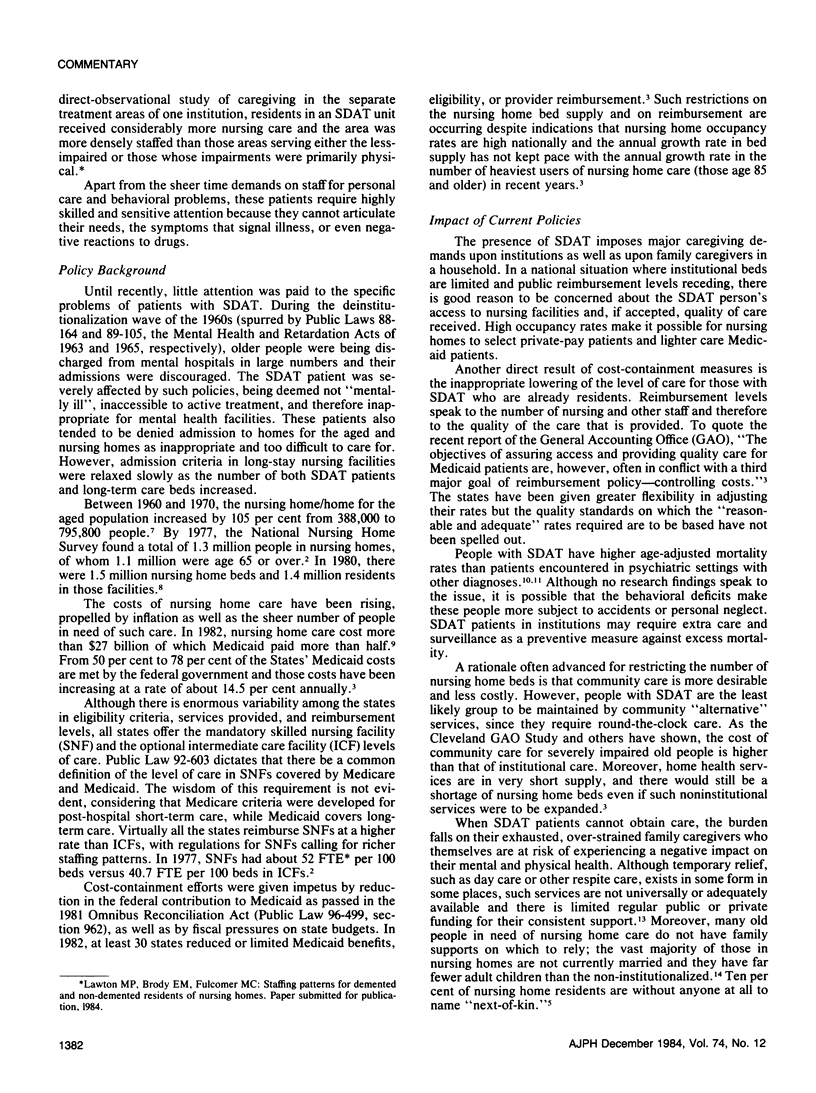Abstract
Increasing costs of institutional care for the aged have occasioned a variety of government cost containment measures. People with senile dementia of the Alzheimer's type (SDAT) will be the principal group to suffer from cutbacks. SDAT patients are usually eligible for Intermediate Care Facilities (ICFs), rather than Skilled Nursing Facilities (SNFs) and therefore for lower reimbursement. Because such patients require heavy care and are the ones most likely to be Medicaid-dependent, nursing homes are being provided with incentives to prevent admissions. At the same time, community services to aid overburdened caregivers are grossly inadequate. Costs to other parts of the health systems are increased by backups in acute hospitals when nursing home beds cannot be found. SDAT and Medicaid eligibility are the principal causes of such "administratively necessary" backup days, but in the main Diagnostic Related Groups (DRGs) may close even that temporary resource. Thus, virtually all avenues of care are shrinking for those who need them most.
Full text
PDF


Selected References
These references are in PubMed. This may not be the complete list of references from this article.
- Gibson R. M., Waldo D. R., Levit K. R. National health expenditures, 1982. Health Care Financ Rev. 1983 Fall;5(1):1–31. [PMC free article] [PubMed] [Google Scholar]
- Johnson C. L., Catalano D. J. Childless elderly and their family supports. Gerontologist. 1981 Dec;21(6):610–618. doi: 10.1093/geront/21.6.610. [DOI] [PubMed] [Google Scholar]
- Katzman R. Editorial: The prevalence and malignancy of Alzheimer disease. A major killer. Arch Neurol. 1976 Apr;33(4):217–218. doi: 10.1001/archneur.1976.00500040001001. [DOI] [PubMed] [Google Scholar]


